by Sandra Gulland | Nov 21, 2014 | Baroque Explorations |

It’s simply astonishing what one can now find on-line. In the way of any wander through library stacks, I came upon this title on Gallica.bnf.fr, the French national library on-line:
Tableau historique, littéraire et politique de l’an VI de la Républic française.
Of course it was not at all what I was looking for, but although “You can’t always get what you want, but if you try sometime, you find you get what you need.” :-)
I love the way the digital book opens with its cover:
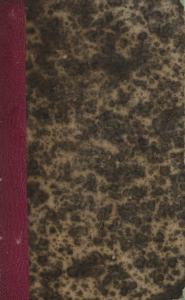
And then turns to the marbled end-paper:
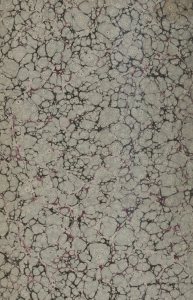
Here’s a crop of the title page:
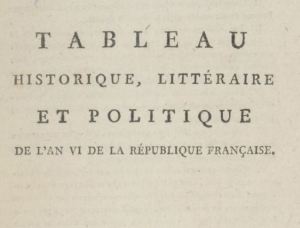
(You can almost feel the rich texture of the paper.)
And then, the first chapter division:
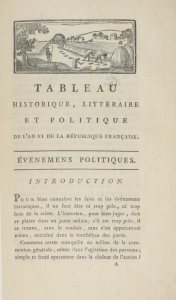
What caught my attention “leafing” through this book was the section on legislation, a daily account of laws passed in the years 1798-1799.
They are very detailed: they needed to be. The French government was (once again) creating a government from scratch. Laws mentioned cover passport regulations, import duties, the re-establishment of a national lottery, the legislateurs’ own schedule (they will no longer meet on décadis (the end of the 10-day week), patents, manufacture of goods, the “uniform” to be worn by the members of the legislature …
“…habit français, couleur bleu national, croisé et dépassant le genou. Ceinture de soie tricolore, avec des franges d’or. Manteau écarlate à la grecque, orné de broderie en laine. Bonnet de velours, portant une aigrette tricolore.” – page 142
Alas, I am unable to find an illustration of this costume. No doubt they were somewhat more circumspect than those from 1796. Below left, Executive Director from 1796, compared to Napoleon’s uniform of choice as First Consul on the right:
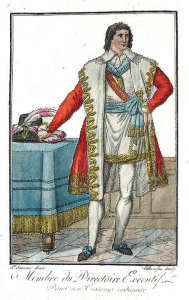

The legal record is many pages long, but I’ll note a few:
One law passed condemns to death those who rob by force or violence. This is significant because violent crime had become rampant.
Marriages (which must be civil) could only be held on décadis.
One significant law, passed 12 Nivose, an VIII (January 1, 1799), declares that Blacks born in Africa or in foreign colonies, and transferred to French islands, were free as soon as they step foot on French soil. The Revolutionary government had several years before outlawed slavery in France, but I don’t believe that it had gone so far as to declare it illegal in its colonies. (I should note that Napoleon will eventually reinstate slavery in the French colonies, and no: it was not Josephine’s doing.)
It’s delightful how worthwhile procrastinating can be. I found an excellent Revolutionary calendar (more on that later), learned the date when there was an eclipse of the moon, what the new national fêtes were to be, and much, much more.
by Sandra Gulland | Jul 28, 2014 | Baroque Explorations |
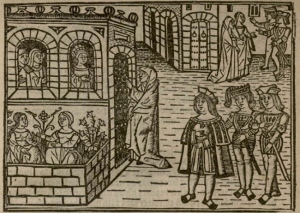
A blog post on Medievalists.net—Medieval Mean Girls: On Sexual Rivalry and the Uses of Cosmetics—reveals a treasure trove of diaries about the jealousies and beautification efforts of women in the late Middle Ages. It is fair to assume that such rivalry continues on through time.
Consider:
- Lipstick: red dove feet mixed with brazil wood and alum
- Toothpaste: nutmeg
- Nail polish: henna
Here are some priceless quotes:
Is there here any lady among us who does not wear cosmetics or cream on her face, or uses depilatories, or cara de diable? How they sorrowfully take off that cream, and put on snake and lizard water. Oh, they sin greatly those who act so vainly, in order to please men.
Well, does she wear white powder on her face? Truly, up to her eyes! And, blush? In excess! Her eyebrows [are] well tweezed, high and arched, her eyes made up. Her forehead [is] scraped clean, and even her entire face –the big and tiny hairs– with pelador de pez, turpentine, and chamomile oil. Her lips [are] very red, not natural but from red dove feet mixed with brazil wood and alum. Her teeth were brushed with nutmeg or scrubbed with styrax, an herb from India. Her nails [are] stained with henna and grown long, longer than those of her pinkies, also stained white, and she even covers them with gold. Her face [is] shiny like a sword […]. She puts ten different foundation creams on her face, one after the other, once each day, and when she doesn’t have them on she looks like an Indian heathen.
All the year long she is mewed up at home … she anoints her face with gall and honey, with parched grape and figs crushed and pressed together … … she has such breasts, being a maid, as if she had been the mother of three children; and are for all the world, like nothing more than two great pompeans, or big bottled gourds. Her belly I have not seen, but judging it by the rest, I verily believe it, to be slack and as flaggy, as a woman of fifty year old. She had a room full of distillation vessels, wide mouthed and narrow necked flasks made of clay, glass, copper, or tin, made in a thousand different ways. She made sublimate, cooked-up make up, face-paints, lipsticks, llanillas, lotions, waters to make the face glisten, to cleanse the skin, alvalines, and other tonics, made of shavings of daffodil, wood bark, cittibush, tarragon, galls, sour grapes, [and] grape must, distilled and sweetened with sugar…
Whoever wishes one’s face to be beautiful should constrain the blood from flowing towards it. With wine and food both subtle and tasty, the fig in this case is wonderfully good, as is date water and honeyed foods. And if from chicken pox one’s face is marked, use an ointment from cheese, honey, and salt. And an ointment of cetrina [cerrusite, camphor, and oil mixed with citron] is very good for this. And if one has freckles or discolorations on one’s face, a myrrh wash is beneficial.
by Sandra Gulland | Jul 27, 2014 | Adventures of a Writing Life |
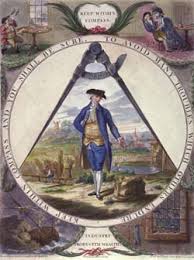
George Washington studied Rules of Civility & Decent Behaviour based on a work by French Jesuits in 1595. In showing what people should not do, I find such guides helpful in defining bad behaviour. For example, based on these rules, you would:
1) be disrespectful,
2) put your hands on some private part of your body,
3) sing to yourself with a humming noise,
4) drum with your fingers or feet,
5) cough, sneeze, sigh or yawn,
6) fall asleep when others are talking,
7) spit into the fire,
8) gnaw your nails,
9) bedew someone’s face with your spittle,
10) kill fleas or lice ticks in company,
11) turn your back to someone who is speaking,
12) puff up your cheeks or loll out your tongue,
13) read letters, books or papers without asking leave,
14) laugh too loud and too much at a public spectacle,
15) look men of quality full in the face,
16) run in the streets with your mouth open,
17) ask someone how they came to have a blemish,
18) laugh in the presence of a superior,
19) scratch, spit, cough and blow your nose at table,
20) use your greasy knife to take salt or cut bread,
21) blow on your hot broth,
22) spit out the stones of a fruit pie onto your plate,
23) throw something under the table,
24) drink and talk with your mouth full,
25) clean your teeth with a table cloth napkin, fork or knife.
Number 9 is especially annoying, don’t you think? And don’t you just love the word “bedew”?
by Sandra Gulland | Nov 17, 2013 | Baroque Explorations |
One of my favourite blogs is BibliOdyssey, which I’ve mentioned a few times before. It’s a visual historical blog, and it invariably takes my breath away. The entry on “Noble Country Living” is especially rich.
It shows illustrations from Georgica Curiosa, a 3-volume work published in 1682 by Wolf Helmhardt von Hohberg, covering all aspects of daily rural life.
What a feast for a historian! Here are only a few of the illustrations:
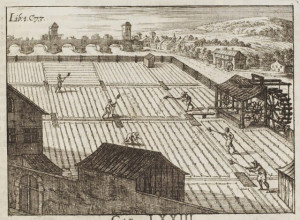
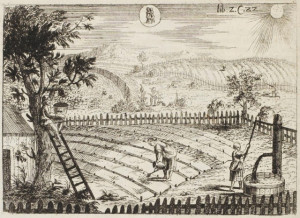
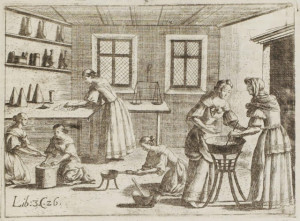
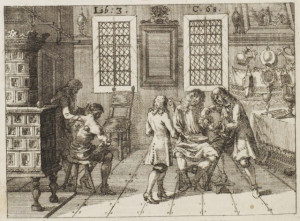
For more illustrations and information, be sure to go to the BibliOdyssey website. Wonderfully, the book is online (click “overview” to get to the pages).
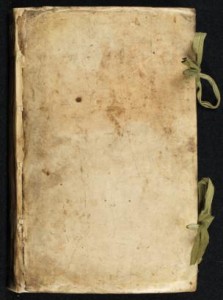
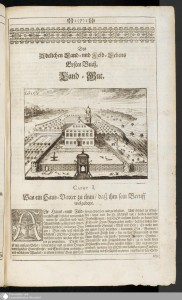

by Sandra Gulland | Jul 5, 2012 | Baroque Explorations, On Research |
London Lives (1690 – 1800) is a wonderful research site. Put in a search term, and lots comes up, mostly quotes from Court records.

For example, because I’m fascinated with early theater right now, I searched “players” and got a vivid snapshot of daily life.
I loved this best—a definition of who would be deemed a Rogue and Vagabond (and thus taken directly to the Justice of the Peace):
THAT Persons pretending themselves to be Patent-Gatherers, or Collectors for Prisons, Goals, or Hospitals, and wandring abroad for that Purpose; all Fencers, Bear-wards, Common-Players of Interludes, Minstrels, Juglers; all Persons pretending to be Gypsies, or wandring in the Habit or Form of counter-feit Egyptians, or pretending to have Skill in Physiognomy, Palmistry, or like crafty Science, or pretending to tell Fortunes, or like phantastical Imaginations, or using any Subtle Craft, or unlawful Games or Plays; all Persons able in Body, who run away, and leave their Wives or Children to the Parish, and, not having where with otherwise to maintain themselves, use Loytering, and refuse to work for the usual and common Wages; and all other idle Persons wandring Abroad and begging (except Soldiers, Mariners or Sea-faring Men licenced under the Hand and Seal of some Justice of Peace, fetting down the Time and Place of Landing, the Place to which, and the Time within which, they are to pass, while they continue in the direct Way and during the Time so limited) Shall be deem’d Rogues and Vagabonds.
Delightful expressions:
“crafty Science”
“phantastical Imaginations”
“Subtle Craft”
Note that licensed soldiers and mariners were allowed to beg.
Do you have a research site you can recommend?
SaveSave
SaveSave


















